This is the first post in a series outlining the case for Geo-Fauvism, a growing movement of wild Earth inspiration in art, literature, music and design, first presented at the Pando Populus Conference “Seizing an Alternative: Toward an Ecological Civilization” at Pomona College.
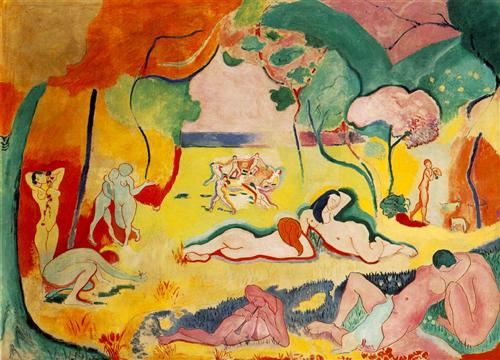

Fauvism: A Radical Perspective Shift Worthy of a Wild Beast
Taking off from the early 20th Century French art “Fauvists” or “Wild Beasts,” cross-disciplinary creations of art, lifestyle, literature, and design respond to and react against the collapse of global environmental systems, the destruction of Indigenous Earth-based societies, and a narrowing of cultural opportunities in the mainstream corporatized media. Geo-Fauvists create to reconnect with the wild and heal humanity’s rift with the landscape, building a new community based on integration with the ecosystem.
Fauvism, an early 20th Century painting movement out of France, broke with Impressionism as well as with older, traditional methods of Earth-perception (Western Linear Perspective). Inspired by examples of Vincent van Gogh and Paul Gauguin, and led by Henri Matisse, Albert Marquet, Andre Derain and an early Pablo Picasso, the movement valued individual expression over everything. Fauvism celebrated the artist’s direct experience, their emotional response to nature, and their intuition superseded Western academic theory or elevated subject matter. Their spontaneous, often subjective response to nature was expressed in bold, undisguised brushstrokes and high-keyed, vibrant colors directly from the tube.
After viewing the boldly colored canvases of Matisse, Derain, Marquet, Maurice de Vlaminck, Kees van Dongen, Charles Camoin, and Jean Puy at the Salon d’Automne of 1905, the critic Louis Vauxcelles disparaged the painters as “fauves” (wild beasts), thus giving their movement the name by which it became known.
Henri Matisse’s Bonheur de Vivre (“Joy of Life”) embodies the perspective shift that typified the radical approach of the fauvists. Its depiction of human forms breaks any rational notion of scale, and redefines vision with regard to time and space. As a result of his experimentation with perspective, the viewer relates differently to the painting and is required to “enter” the scene. It is only from the varied perspectives within this landscape that the abrupt ruptures of scale make sense. In these regards, Fauvism proved to be an important precursor to Cubism and Expressionism as well as a touchstone for future modes of abstraction.
STORY: Dream of a New World: Art’s Role in Societal Change
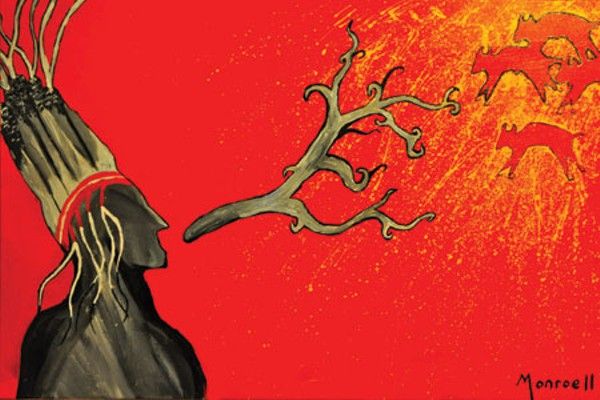

Beyond the Linear, Into the Wild Earth
Speed forward more than 100 years, and the need for blurring the lines, for overcoming a societal adherence to humankind depicting itself as separate from “nature,” becomes an imperative for human survival and sustainability.
How can we heal our relationship with the Earth? How can we reconnect with the wild order that completely blurs the lines between us and them, where invisible entities, mountains, trees, rocks, sand, flowing water, all become life and death elements of our being?
Furthermore, we live in a society inundated with endless information catalogued in servers from the world wide web, images in Google repetitiveness a click here, a meme there, video camera ubiquitous in our phones, social media addictions that respond to commodified flash and virtual reality flesh, and 24-hour sports networks grabbing our attention while the very forces of life and vitality, wind, sun, water, spin beyond our hope of control behind a sky strafed with desperate and futile geo-engineered chem-trails.
Nevertheless, the antidote to the poison remains close at hand. The notion of wilderness, where wild beasts roam, water cascades in splashes down mountain streams flecked with water skaters and bleeping frogs, and greenery blends with insect and mammal to spawn the bounty of love and survival. The wild heals all.
The prefix “Geo” is taken from a Greek word meaning “earth,” usually in the sense of “ground or land.” Geo-Fauvism denotes Beasts of the Wild Earth, manifested in art, landscape creation, lifestyle, literature, music: it’s out there.
STORY: Geo-Fauvism and Anthropocene: Altered Planet, Wild Literature
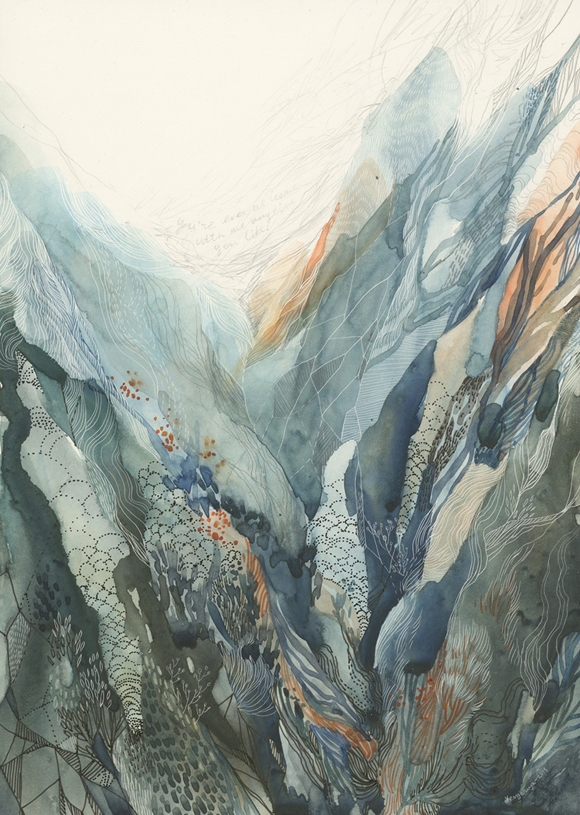

Geo-Fauvism evolved to elevate and relieve the computer-blink-searching-in-vain for the way out of this labyrinth. Geo-Fauvism envisions humanity and wilderness inter-connected at the landscape ecosystem scale. Creativity employing artistic abstraction and traditional mythologies, post-dystopic literature, urban shamanism and mystical psychedelic use, ambient noise music, and the trend toward ecological urbanism are integrally entwined.
I will illustrate with a few examples from visual art and landscape creations. They are not meant to be exhaustive, just a way to set the tone for a much longer dialectic. In later posts, I will cover Geo-Fauvism in literature, design, urbanism, and music.
STORY: Slab City: Creative Homesteading in a Desert of Extremes
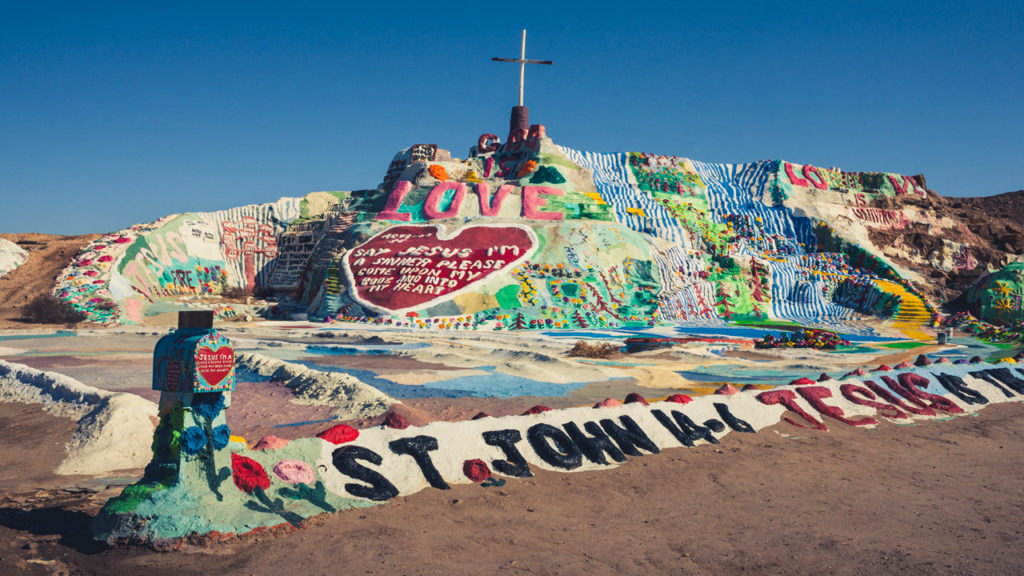

Desert Vision: The late Leonard Knight, who lived out of the back of a truck without electricity or running water in the Imperial Valley desert, created Salvation Mountain, a cavalcade of pastoral designs and religious messages painted on to a mountain of adobe.
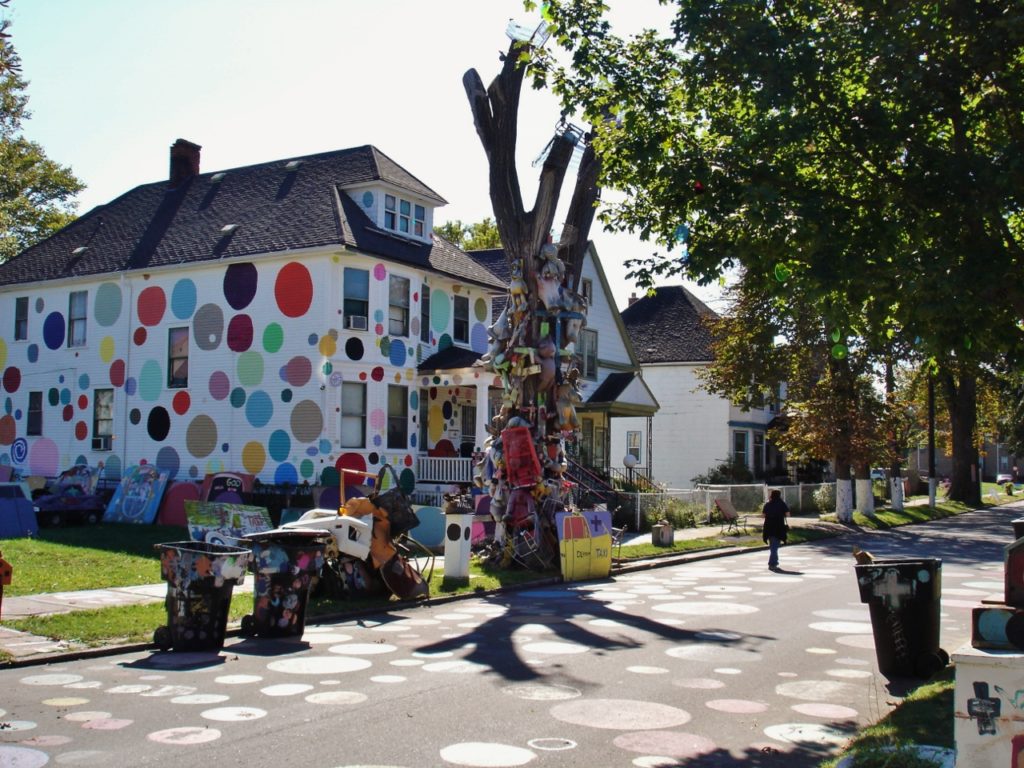

Art of Urban Decay Reborn: An urban conceptual art installation by Tyree Guyton called The Heidelberg Project in the formerly central core of Detroit, Michigan, transforms a neighborhood first devastated by the 1967 riots into a public art project. Embedded in the brightly-painted streets are messages about harmony with nature, intergenerational equity, community health, and economic resilience. Despite a recent arson fire and the city’s ongoing financial turmoil, the public art project set amid grassy fields persists as a monument to the imagination in the face of struggle.
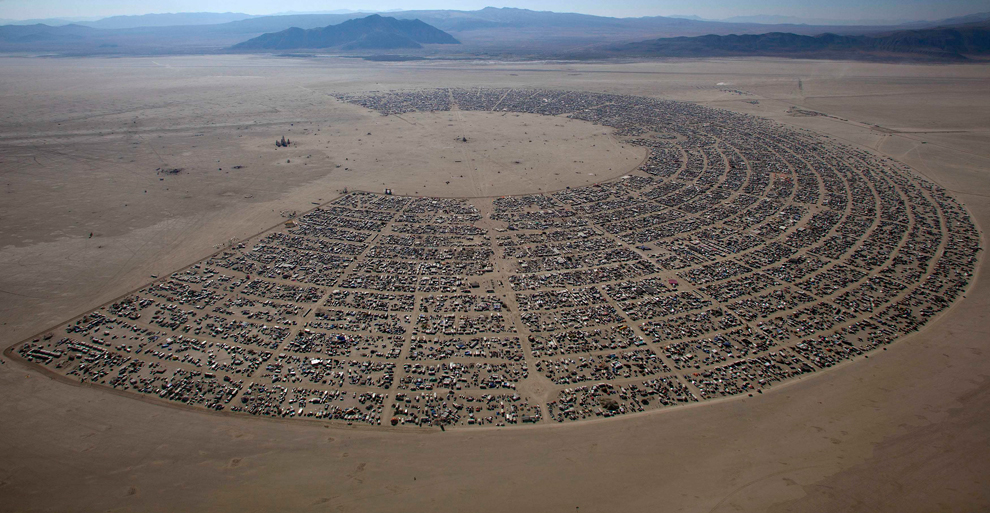

Geo-Fauvist Holy Pilgrimage: Burning Man is considered a vision of the future for many enthusiasts of do-it-yourself creation, a desert-nomad simulacra, based on ten principals of decommodification, radical self-expression, -reliance, and -inclusion. While over the years it has morphed into a commodified free-for-all, with all-expense-paid packages for corporate executives, the entire exercise remains as a clear expression of a recontextualization of humanity within the wild, albeit messy, dusty, and crowded.
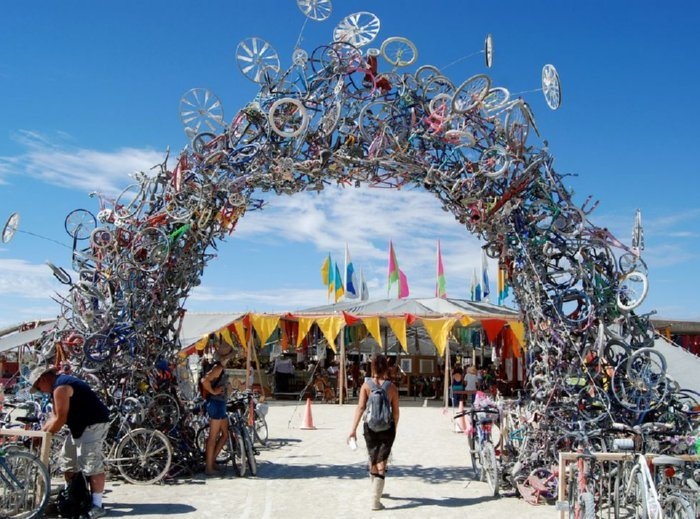

Recycled Art on the Playa: Burning Man’s Black Rock City, more than any other urban area, has been given over completely to bicycles, making it the highest bikes-per-capita metropolis anywhere on the planet. It also is a focus of art, creation, and a “leave no trace” ethic. The prohibition on driving anything but art cars beyond the Esplanade renders Burning Man an enormous week-long ciclavía, or land of the bicycle.
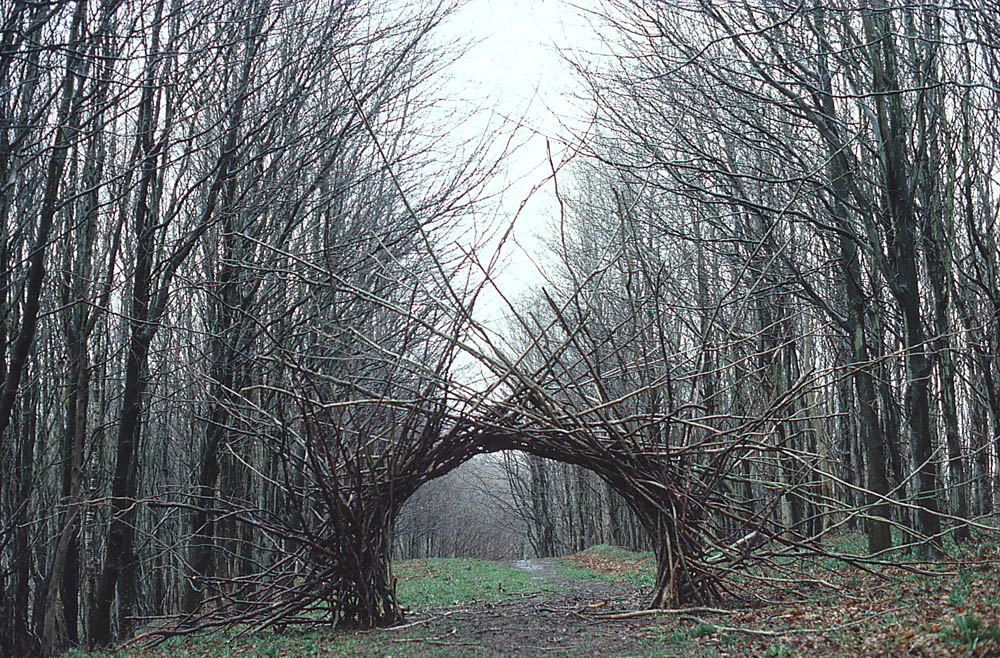

Andy Goldsworthy is a British sculptor, photographer and environmentalist who collaborates with nature to make transient, ephemeral site-specific sculpture and land art. He photographs each piece to capture the moment, and has many permanent sculptures as well. His goal is to understand nature by directly participating in nature as intimately as he can. He generally works with readily available materials: twigs, leaves, stones, snow and ice.
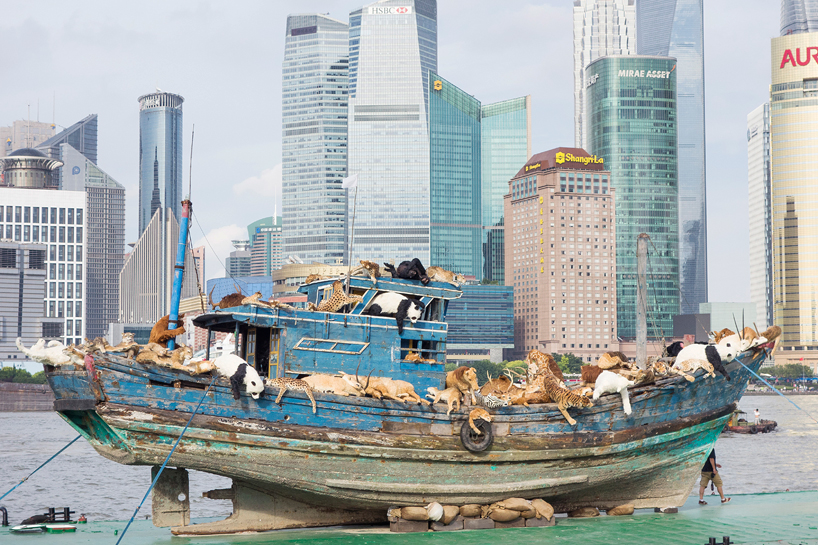

The End of the Earth: New York-based, Chinese-born Cai Guo-Qiang’s The Ninth Wave addresses one of the greatest challenges faced by mankind: Earth’s current environmental crisis. He references a theme in traditional Chinese aesthetics and philosophy: humanity’s longing to return to a primordial landscape and spiritual homeland. The 2014 exhibition included a dystopian Noah’s Ark laden with starving animals escaping an empty city overtaken by nature.
STORY: Postcommodity’s ‘Repellent Fence’ Land Art Spans the U.S. Border
Sacred Healing: Marvin Swallow, Sundance and ceremonial Chief in the Lakota tradition, roadman of the Native American Church, paints “images of time before and after the moment,” whispering sacred stories of the beauty and mystery of creation. What has emerged through his art is a unique and powerful contribution to the growing genre of Sacred Art.
Marvin Swallow travels nationwide along with his Japanese wife, Water Woman Hiroko Matsuda-Swallow, to share their traditions and ceremonies. Swallow is a member of the Sicangu band of the Teton Lakota from the Black Hills of South Dakota.
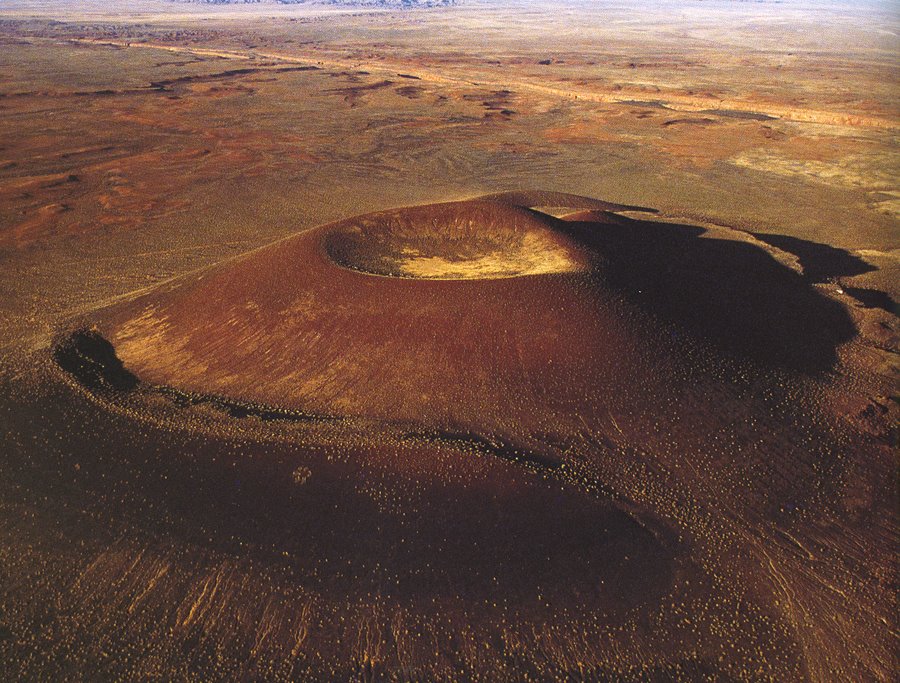

— James Turrell. Pictured: The Roden Crater.
Artist of the Land? While technically not a “Wild Beast” outsider, California light, space, and landscape artist James Turrell has set the tone with the Roden Crater project for a wild earth aesthetic advancing toward the border of artistic mainstream. In 1979 he acquired a vast natural cinder crater located outside Flagstaff, Arizona. The Roden Crater, his best known work still in progress, has him transforming the volcanic crater into a massive naked-eye observatory, designed specifically for the viewing of celestial phenomena.
The Pseudo-Phenomenologist: Another not-so-outsider like a true Geo-Fauvist, Danish-Icelandic artist Olafur Eliasson created such a $15 million phenomena of challenging perspectives in the 2008 NYC Waterfalls Project, it merits mention in this survey.
“His works challenge presuppositions of our surroundings by creating situations that require viewers to reorder their perception of the environment and their place within it.” It begs the question, is this more fad and flash, or do the juxtapositions inspire us to reconnect?
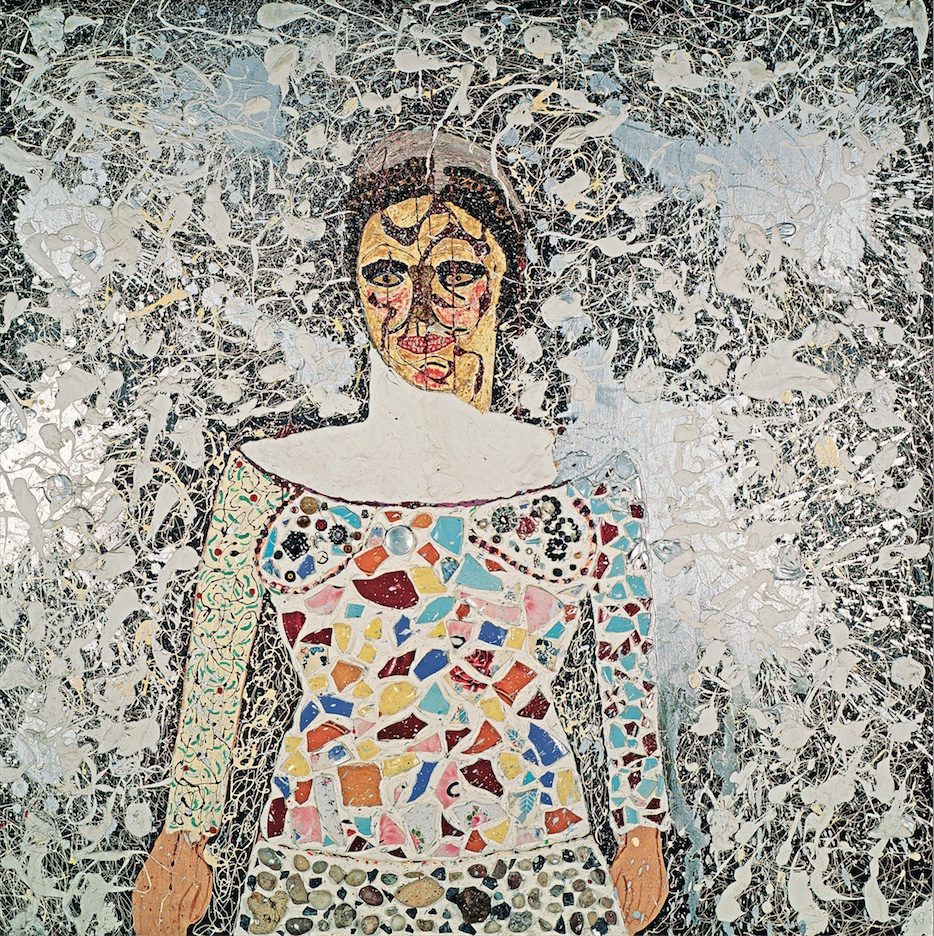

Rebellion with Whimsy: The late Niki de Saint Phalle is the creator of the the Nanas, rotund, ebullient female sculptures, dressed in bold primary colors, modeled after the architecture of whimsical Barcelona architect Antoni Gaudí. Her darker work broke ground for women in art, like the 1958 piece “Autoportrait” (“Self-Portrait”) above, questioning high art, family, and the church.
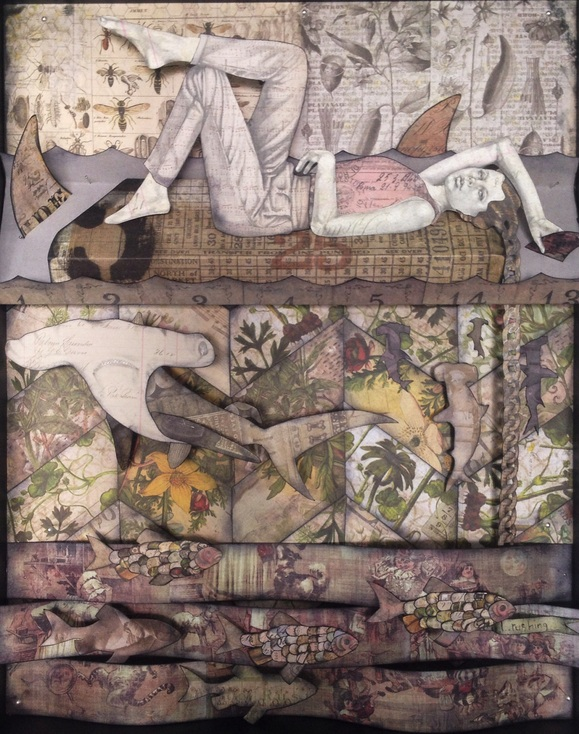

Power of Female Identity: Complicating and challenging the prevailing views of the wilds of female identity has become a consistent theme in Lena Rushing’s work.
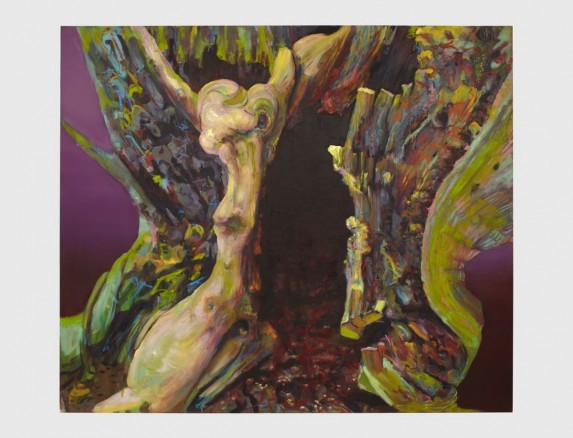

Psychology of the Wild: All of Alexandra Wiesenfeld’s paintings, to varying degrees, utilize provocative, sometimes dreamily Feminist subject matter to inspire discomfort, whether they be the overhead-looking-down, futuristic spectacle of woman and lawnmower, the outright absurdist comedy of the huge, hugely entangled octopus woman, or the sexy, anti-sexist poignancy of Schadenfreude, which lives up to its German title (“taking delight in the misfortune of others”) as various and sundry, out-of-frame males take outsized evident advantage of a sad, prone nude. — Zing Magazine
Sources
Dr. Beth Harris and Dr. Steven Zucker, “The Joy of Life,” KhanAcademy.org
Eunice Lipton, “The Darkness Behind Niki de Saint Phalle’s Colorful Beauties,” Hyperallergic.com
Thanks to the late Adrian Thean Teik Ong, Carl Welty, and Nancy Popp for inspiration, encouragement, and collaboration.
Updated 8 March 2024



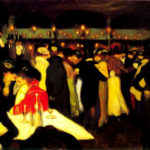
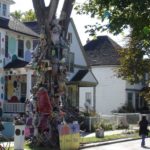
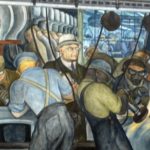
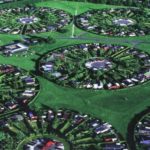






Pingback: Public Art and the Psyche: Olafur Eliasson on Cities | WilderUtopia.com
Pingback: Climate change links | CLAUDIA BORGNA
Pingback: Road Through Paris: Vision LA Climate Action Arts Fest | WilderUtopia.com
Pingback: Postcommodity's 'Repellent Fence' Spans the U.S. Border | WilderUtopia.com
Pingback: Ecological Urbanism: A City Green Re-imagination | WilderUtopia.com
Pingback: Generation Anthropocene: Altered Planet, Wild Literature | WilderUtopia.com
Pingback: Sound of the Earth in Microtones: Harry Partch | WilderUtopia.com
Pingback: Detroit Heidelberg Project - Art Renaissance - WilderUtopia
Pingback: Dream of a New World: Art's Role in Societal Change - WilderUtopia